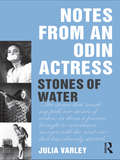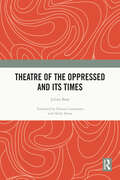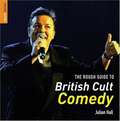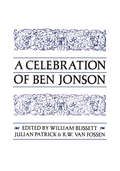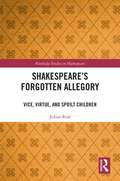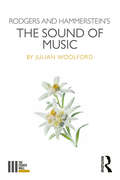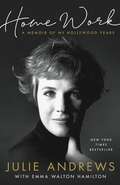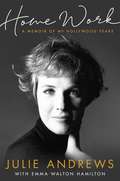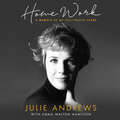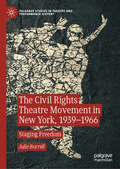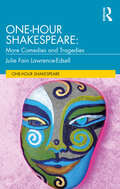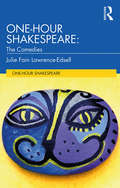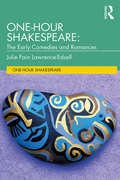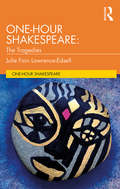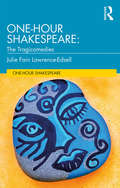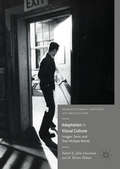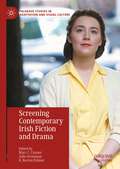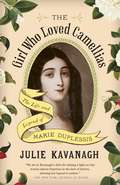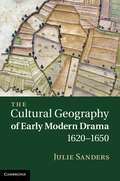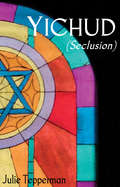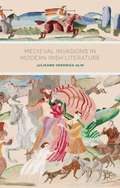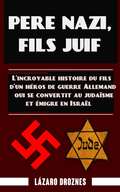- Table View
- List View
Notes From An Odin Actress: Stones of Water
by Julia Varley‘As an actress I sit, speak, run, sweat and, simultaneously, I represent someone who sits, speaks, runs and sweats. As an actress, I am both myself and the character I am playing. I exist in the concreteness of the performance and, at the same time, I need to be alive in the minds and senses of the spectators. How can I speak of this double reality?’ – Julia Varley This is a book about the experience of being an actress from a professional and female perspective. Julia Varley has been a member of Odin Teatret for over thirty years, and Notes from an Odin Actress is a personal account of her work with Eugenio Barba and this world-renowned theatre company. This is a unique window onto the in-depth exercises and day-to-day processes of an Odin member. It is a journal to enlighten anyone interested in the performances, the discoveries and the hard physical work that accompany a life in theatre.
Theatre of the Oppressed and its Times
by Julian BoalPolitical theatre, like any kind of political action, can only be judged in relation to the political moment in which it tries to intervene. Theatre of the Oppressed (TO) was created to fight against dictatorship and an extremely centralized conception of politics. How does it function now, in a time of social media and so-called participatory democracies? Providing an in-depth account of the political and cultural context in which TO emerged, this book asks: How do contemporary understandings of concepts like oppression, representation, participation, and emancipation shape TO today? Highlighting the pitfalls of reducing oppression to one-to-one relationships, the book proposes a version of Forum Theatre dramaturgy that portrays oppression as a defining structure of societies. The author also shares specific examples of movements and other organizations that use Theatre of the Oppressed to construct themselves. Theatre of the Oppressed and Its Times is an essential text for practitioners and scholars of TO, applied theatre practitioners, students, and anyone interested in how theatre can concretely assist in the transformation of the world.
A Young Man's Passage
by Julian ClaryThis is Julian Clary's story, in his own words - the tale of an awkward schoolboy who became a huge worldwide success on stage and screen.After a sheltered suburban upbringing, Julian was sent to St Benedict's, where beatings from 'holy' men gave him some brutal life lessons, and other 'unholy' boys his first awakenings of sexuality. He had just one true friend and ally, Nick - to his other school peers, Julian's aloof demeanour made him an enigma or simply a figure of ridicule. In school he was just another pained adolescent, but inside Julian was a new Jean Genet or Quentin Crisp bursting to get out.Leaving St Benedict's thankfully behind him, Julian went on to college where he found his true vocation as an entertainer with a peculiar comic brand of smut and glamour. At the same time, he was finding as much sex as he could, sometimes with remarkably less-than-glamorous characters.Periods in community theatre and the singing telegram industry followed before Julian hit the big time with cabaret co-star Fanny the Wonder Dog as The Joan Collins Fan Club. Soon, the world was his oyster. But fame came at a price, as Julian struggled not only with the reality of being a high-profile gay man in the 1980s but also the pain of losing his lover to terminal illness.Far more than just another celebrity autobiography or 'funny book', this is a touching, beautifully written and wryly witty account of a unique progression from shy child to comedy icon.
The Rough Guide to British Cult Comedy
by Julian HallThe British Cult Comedy is the guide to live and television comedy in Britain from the 1980s to the present day. From Ben Elton to Alan Carr, this book profiles fifty of the influential cult comedy icons and discovers how they became household names.
A Celebration of Ben Jonson
by William F. Blissett Julian Patrick R.W. Van FossenThe papers in this volume were given by some of the world's foremost Jonsonian scholars at a conference at the University of Toronto which marked the 400th anniversary of his birth. Each contributor came from a different institution, and Canada, the United States, Great Britain, and New Zealand were represented. The balance of papers likewise reflects the range of Ben Jonson's achievement and the combination of brio and control so characteristic of him.The papers arrange themselves in pairs: 'The Incredibility of Jonsonian Comedy,' as discussed by Professor Clifford Leech, is of a piece with distrust and defiance of the audience as discussed in the paper 'Jonson and the Loathèd Stage' by Professor Jonas Barish; Professor George Hibbard in 'Ben Jonson and Human Nature' and Professor D.I. McKenzie in 'The Staple of News and the Late Plays' offer critical assessment of plays, the one wide-ranging, the other closely focused on a previously neglected play; and Professor H.N. Maclean in '"A More Secret Cause": The Wit of Jonson's Poetry' and Professor L.C. Knights in 'Ben Jonson: Public Attitudes and Social Poetry' approach the difficult and rewarding task of defining Jonson's poetry of appraisal in different but complementary styles.
Shakespeare’s Forgotten Allegory: Vice, Virtue, and Spoilt Children (Routledge Studies in Shakespeare)
by Julian RealShakespeare’s Forgotten Allegory posits three startling points: that we have today forgotten a cultural icon that helped to bring about the Renaissance; that this character, used to distil classical wisdom regarding how to raise children to become moral adults, consistently appeared in plays performed between 1350 and 1650; and that the character was often utilised by the likes of Shakespeare and Ben Jonson, and therefore adds a long-forgotten allegorical narrative to their works. This evidence-based reappraisal of some of the most iconic works in Western literature suggests that a core element of their content has been ‘lost’ for centuries. This text will appeal to anyone with an interest in late medieval and early modern drama, especially the works of Shakespeare; to those interested in the history of teaching and child-rearing; to anyone curious about the practical application of philosophy in society; to anyone that would like to know more about the crucial and defining period today known as the Renaissance, and how and why society was redesigned by those with influence; and to all those who would like to know more about how history, which though sometimes misplaced, continues to influenced our modern world.
Rodgers and Hammerstein's The Sound of Music (The Fourth Wall)
by Julian Woolford'Blossom of snow may you bloom and grow, Bloom and grow forever' Often dismissed as kitsch sentimentalism, Rodgers and Hammerstein’s The Sound of Music has proven an enduringly popular and surprisingly influential cultural icon, both within the field of musical theatre and the wider world. The Broadway production won five Tony Awards, the London production became the longest-running West End musical, and the movie version was the highest-grossing film of all time. This book examines how the musical heralded the end of an era on Broadway; its reinvention of history and biography; how the film has influenced future stage productions; the ways in which it put child performers centre stage; and how, nearly 60 years after its stage debut, the musical still has a direct impact on the modern world, from the United States to the Middle East. In this series of short essays, Julian Woolford re-examines the musical from seven different perspectives, revealing the ways in which it continues to impact the 21st century.
The Philosophy of Tragedy
by Julian YoungThis book is a full survey of the philosophy of tragedy from antiquity to the present. From Aristotle to Žižek the focal question has been: why, in spite of its distressing content, do we value tragic drama? What is the nature of the 'tragic effect'? Some philosophers point to a certain kind of pleasure that results from tragedy. Others, while not excluding pleasure, emphasize the knowledge we gain from tragedy – of psychology, ethics, freedom or immortality. Through a critical engagement with these and other philosophers, the book concludes by suggesting an answer to the question of what it is that constitutes tragedy 'in its highest vocation'. This book will be of equal interest to students of philosophy and of literature.
Home Work: A Memoir of My Hollywood Years
by Julie AndrewsIn this follow-up to her critically acclaimed memoir, Home, Julie Andrews shares reflections on her astonishing career, including such classics as Mary Poppins, The Sound of Music, and Victor/Victoria. <P><P> In Home, the number one New York Times international bestseller, Julie Andrews recounted her difficult childhood and her emergence as an acclaimed singer and performer on the stage. With this second memoir, Home Work: A Memoir of My Hollywood Years, Andrews picks up the story with her arrival in Hollywood and her phenomenal rise to fame in her earliest films--Mary Poppins and The Sound of Music. Andrews describes her years in the film industry -- from the incredible highs to the challenging lows. <P><P>Not only does she discuss her work in now-classic films and her collaborations with giants of cinema and television, she also unveils her personal story of adjusting to a new and often daunting world, dealing with the demands of unimaginable success, being a new mother, the end of her first marriage, embracing two stepchildren, adopting two more children, and falling in love with the brilliant and mercurial Blake Edwards. <P><P>The pair worked together in numerous films, including Victor/Victoria, the gender-bending comedy that garnered multiple Oscar nominations. Cowritten with her daughter, Emma Walton Hamilton, and told with Andrews's trademark charm and candor, Home Work takes us on a rare and intimate journey into an extraordinary life that is funny, heartrending, and inspiring. <P><P><b>A New York Times Bestseller</b>
Home Work: A Memoir of My Hollywood Years
by Julie Andrews'The book is filled with that most distinctive of all her qualities: her voice' The TimesHome Work, the second instalment of Julie Andrews' internationally bestselling memoirs, begins with her arrival in Hollywood to make her screen debut in Walt Disney's Mary Poppins. It was closely followed by The Sound of Music, and the beginning of a movie career that would make her an icon to millions all over the world.With her trademark charm and candour, Julie reveals behind-the-scenes details and reflections on her impressive body of work - from the incredible highs to the challenging lows. She shares her professional experiences and collaborations with giants of cinema and television, and also unveils her personal story of adjusting to a new and often daunting world. This included dealing with unimaginable public scrutiny, being a new mother, embracing two stepchildren, adopting two more children, and falling in love with the brilliant and mercurial Blake Edwards. The pair worked together in numerous films, including 10, S.O.B and Victor/Victoria.Home Work takes us on a rare and intimate journey into a remarkable life that is funny, heart-breaking and inspiring.
Home Work: A Memoir of My Hollywood Years
by Julie Andrews'Home Work is written with a warm heart and a generous spirit ... an honest attempt to make sense of an often chaotic life' SUNDAY EPXRESS'The book is filled with that most distinctive of all her qualities: her voice ... Mary Poppins may appear only briefly here, but her spirit is alive and well' THE TIMESIn this follow-up to her critically acclaimed and bestselling memoir Home, the enchanting Julie Andrews picks up her story with her arrival in Hollywood, sharing the career highlights, personal experiences and reflections behind her astonishing career, including such classics as Mary Poppins, The Sound of Music, Victor/Victoria and many others.In Home, Julie Andrews recounted her difficult childhood and her emergence as an acclaimed singer and performer on the stage. In her new memoir, Julie picks up the story with her arrival in Hollywood and her astonishing rise to fame as two of her early films -Mary Poppins and The Sound of Music- brought her instant and enormous success, including an Oscar. It was the beginning of a career that would make Julie Andrews an icon to millions the world over. In Home Work, Julie describes her years in Hollywood - from the incredible highs to the challenging lows. Not only does she detail her work in now-classic films and her collaborations with giants of cinema and television; she also unveils her personal story of adjusting to a new and often daunting world, dealing with the demands of unimaginable success, being a new mother, moving on from her first marriage, embracing two stepchildren, adopting two more children, and falling in love with the brilliant and mercurial Blake Edwards. The pair worked together in numerous films, culminating in Victor/Victoria, the gender-bending comedy that garnered multiple Oscar nominations. Told with her trademark charm and candour, Julie Andrews takes us on a rare and intimate journey into an astonishing life that is funny, heartbreaking and inspiring.
The Civil Rights Theatre Movement in New York, 1939–1966: Staging Freedom (Palgrave Studies in Theatre and Performance History)
by Julie BurrellThis book argues that African American theatre in the twentieth century represented a cultural front of the civil rights movement. Highlighting the frequently ignored decades of the 1940s and 1950s, Burrell documents a radical cohort of theatre artists who became critical players in the fight for civil rights both onstage and offstage, between the Popular Front and the Black Arts Movement periods. The Civil Rights Theatre Movement recovers knowledge of little-known groups like the Negro Playwrights Company and reconsiders Broadway hits including Lorraine Hansberry’s A Raisin in the Sun, showing how theatre artists staged radically innovative performances that protested Jim Crow and U.S. imperialism amidst a repressive Cold War atmosphere. By conceiving of class and gender as intertwining aspects of racism, this book reveals how civil rights theatre artists challenged audiences to reimagine the fundamental character of American democracy.
One-Hour Shakespeare: More Comedies and Tragedies (One-Hour Shakespeare)
by Julie Fain Lawrence-EdsellThe One-Hour Shakespeare series is a collection of abridged versions of Shakespeare’s plays, designed specifically to accommodate both small and large casts. This volume, More Comedies and Tragedies, includes the following plays: The Comedy of Errors The Taming of the Shrew Antony and Cleopatra King Lear These accessible and versatile scripts are supported by: an introduction with emphasis on the evolution of the series and the creative process of editing; the One-Hour projects in performance, a chapter on implementing money-saving ideas and suggestions for production whether in or outside of a classroom setting; specific lesson plans to incorporate these projects successfully into an academic course; suggested casting assignments for small to large casts; the how-tos of producing a radio play; and cross-gender casting suggestions. These supplementary materials make the plays valuable not only for actors, but for any environment, cast or purpose. Ideal for both academics and professionals, One-Hour Shakespeare is the perfect companion to teaching and staging the most universally read and performed playwright in history.
One-Hour Shakespeare: The Comedies (One-Hour Shakespeare)
by Julie Fain Lawrence-EdsellThe One-Hour Shakespeare series is a collection of abridged versions of Shakespeare’s plays, designed specifically to accommodate both small and large casts. This volume, The Comedies, includes the following plays: As You Like It Love’s Labour’s Lost Much Ado About Nothing Twelfth Night These accessible and versatile scripts are supported by: an introduction with emphasis on the evolution of the series and the creative process of editing; the One-Hour projects in performance, a chapter on implementing money-saving ideas and suggestions for production whether in or outside a classroom setting; specific lesson plans to incorporate these projects successfully into an academic course; and cross-gender casting suggestions. These supplementary materials make the plays valuable not only for actors, directors and professors, but for any environment, cast or purpose. Ideal for both academics and professionals, One-Hour Shakespeare is the perfect companion to teaching and staging the most universally read and performed playwright in history.
One-Hour Shakespeare: The Early Comedies and Romances (One-Hour Shakespeare)
by Julie Fain Lawrence-EdsellThe One-Hour Shakespeare series is a collection of abridged versions of Shakespeare’s plays, designed specifically to accommodate both small and large casts. This volume, The Early Comedies and Romances, includes the following plays: A Midsummer Night’s Dream Two Gentlemen of Verona The Tempest The Winter’s Tale. These accessible and versatile scripts are supported by: an introduction with emphasis on the evolution of the series and the creative process of editing; the One-Hour projects in performance, a chapter on implementing money-saving ideas and suggestions for production whether in or outside a classroom setting; specific lesson plans to incorporate these projects successfully into an academic course; and cross-gender casting suggestions. These supplementary materials make the plays valuable not only for actors, directors and professors, but for any environment, cast or purpose. Ideal for both academics and professionals, One-Hour Shakespeare is the perfect companion to teaching and staging the most universally read and performed playwright in history.
One-Hour Shakespeare: The Tragedies (One-Hour Shakespeare)
by Julie Fain Lawrence-EdsellThe One-Hour Shakespeare series is a collection of abridged versions of Shakespeare’s plays, designed specifically to accommodate both small and large casts. This volume, The Tragedies, includes the following plays: Hamlet Julius Caesar Macbeth Othello Romeo and Juliet These accessible and versatile scripts are supported by: an introduction with emphasis on the evolution of the series and the creative process of editing; the One-Hour projects in performance, a chapter on implementing money-saving ideas and suggestions for production, whether in or outside a classroom setting; specific lesson plans to incorporate these projects successfully into an academic course; and cross-gender casting suggestions. These supplementary materials make the plays valuable not only for actors, directors and professors, but for any environment, cast or purpose. Ideal for both academics and professionals, One-Hour Shakespeare is the perfect companion to teaching and staging the most universally read and performed playwright in history.
One-Hour Shakespeare: The Tragicomedies (One-Hour Shakespeare)
by Julie Fain Lawrence-EdsellThe One-Hour Shakespeare series is a collection of abridged versions of Shakespeare’s plays, designed specifically to accommodate both small and large casts. This volume, The Tragicomedies, includes the following plays: All’s Well That Ends Well Measure for Measure The Merchant of Venice. These accessible and versatile scripts are supported by: an introduction with emphasis on the evolution of the series and the creative process of editing; the One-Hour projects in performance, a chapter on implementing money-saving ideas and suggestions for production whether in or outside a classroom setting; specific lesson plans to incorporate these projects successfully into an academic course; and cross-gender casting suggestions. These supplementary materials make the plays valuable not only for actors, directors and professors, but for any environment, cast or purpose. Ideal for both academics and professionals, One-Hour Shakespeare is the perfect companion to teaching and staging the most universally read and performed playwright in history.
Adaptation in Visual Culture: Images, Texts, and Their Multiple Worlds (Palgrave Studies in Adaptation and Visual Culture)
by R. Barton Palmer Julie GrossmanThis book offers the first comprehensive discussion of the relationship between Modern Irish Literature and the Irish cinema, with twelve chapters written by experts in the field that deal with principal films, authors, and directors. This survey outlines the influence of screen adaptation of important texts from the national literature on the construction of an Irish cinema, many of whose films because of cultural constraints were produced and exhibited outside the country until very recently. Authors discussed include George Bernard Shaw, Oscar Wilde, Liam O'Flaherty, Christy Brown, Edna O'Brien, James Joyce, and Brian Friel. The films analysed in this volume include THE QUIET MAN, THE INFORMER, MAJOR BARBARA, THE GIRL WITH GREEN EYES, MY LEFT FOOT, THE PICTURE OF DORIAN GRAY, THE SNAPPER, and DANCING AT LUGHNASA. The introduction features a detailed discussion of the cultural and political questions raised by the promotion of forms of national identity by Ireland's literary and cinematic establishments.
Screening Contemporary Irish Fiction and Drama (Palgrave Studies in Adaptation and Visual Culture)
by R. Barton Palmer Marc C. Conner Julie GrossmanIn this book, each chapter explores significant Irish texts in their literary, cultural, and historical contexts. With an introduction that establishes the multiple critical contexts for Irish cinema, literature, and their adaptive textual worlds, the volume addresses some of the most popular and important late 20th-Century and 21st Century works that have had an impact on the Irish and global cinema and literary landscape. A remarkable series of acclaimed and profitable domestic productions during the past three decades has accompanied, while chronicling, Ireland’s struggle with self-identity, national consciousness, and cultural expression, such that the story of contemporary Irish cinema is in many ways the story of the young nation’s growth pains and travails. Whereas Irish literature had long stood as the nation’s foremost artistic achievement, it is not too much to say that film now rivals literature as Ireland’s key form of cultural expression. The proliferation of successful screen versionings of Irish fiction and drama shows how intimately the contemporary Irish cinema is tied to the project of both understanding and complicating (even denying) a national identity that has undergone radical change during the past three decades. This present volume is the first to present a collective accounting of that productive synergy, which has seen so much of contemporary Irish literature transferred to the screen.
The Girl Who Loved Camellias: The Life and Legend of Marie Duplessis
by Julie KavanaghFrom the author of Nureyev, the definitive biography of the celebrated Russian dancer, now comes the astonishing and unknown story of Marie Duplessis, the courtesan who inspired Alexandre Dumas fils's novel and play La dame aux camélias, Giuseppe Verdi's opera La Traviata, George Cukor's film Camille, and Frederick Ashton's ballet Marguerite and Armand. Sarah Bernhardt, Eleonora Duse, Greta Garbo, Isabelle Huppert, Maria Callas, Anna Netrebko, and Margot Fonteyn are just a few of the celebrated actors, singers, and dancers who have portrayed her. Drawing on new research, Julie Kavanagh brilliantly re-creates the short, intense, and passionate life of the tall, pale, slender girl who at thirteen fled her brute of a father and Normandy to go to Paris, where she would become one of the grand courtesans of the 1840s. France's national treasure, Alexandre Dumas père, was intrigued by her, his son became her lover, and Franz Liszt, too, fell under her spell. Quick to adapt an aristocratic mien, with elegant clothes, a coach, and a grand apartment, she entertained a salon of dandies, writers, and artists. Fascinating to both men and women, Marie, with her stylish outfits and signature camellias, was always a subject of great interest at the opera or at the Café de Paris, where she sat at the table of the director of the Paris Opéra, along with the director of the Théâtre Variétés, the infamous dancer Lola Montez, and others. Her early death at age twenty-three from tuberculosis created an outpouring of sympathy, noted by Charles Dickens, who wrote in February 1847: "For several days all questions political, artistic, commercial have been abandoned by the papers. Everything is erased in the face of an incident which is far more important, the romantic death of one of the glories of the demi-monde, the beautiful, the famous Marie Duplessis." With The Girl Who Loved Camellias, Kavanagh has written a compelling and poignant life of a nineteenth-century muse whose independent and modern spirit has timeless appeal.
Early Modern Drama, 1576-1642
by Julie SandersEngaging and stimulating, this Introduction provides a fresh vista of the early modern theatrical landscape. Chapters are arranged according to key genres (tragedy, revenge, satire, history play, pastoral and city comedy), punctuated by a series of focused case studies on topics ranging from repertoire to performance style, political events to the physical body of the actor, and from plays in print to the space of the playhouse. Julie Sanders encourages readers to engage with particular dramatic moments, such as opening scenes, skulls on stage or the conventions of disguise, and to apply the materials and methods contained in the book in inventive ways. A timeline and frequent cross-references provide continuity. Always alert to the possibilities of performance, Sanders reveals the remarkable story of early modern drama not through individual writers, but through repertoires and company practices, helping to relocate and re-imagine canonical plays and playwrights.
The Cultural Geography of Early Modern Drama, 1620–1650
by Julie SandersLiterary geographies is an exciting new area of interdisciplinary research. Innovative and engaging, this book applies theories of landscape, space and place from the discipline of cultural geography within an early modern historical context. Different kinds of drama and performance are analysed: from commercial drama by key playwrights to household masques and entertainment performed by families and in semi-official contexts. Sanders provides a fresh look at works from the careers of Ben Jonson, John Milton and Richard Brome, paying attention to geographical spaces and habitats like forests, coastlines and arctic landscapes of ice and snow, as well as the more familiar locales of early modern country estates and city streets and spaces. Overall, the book encourages readers to think about geography as kinetic, embodied and physical, not least in its literary configurations, presenting a key contribution to early modern scholarship.
YICHUD (Seclusion)
by Julie TeppermanThe Yichud Room is the place where the bride and groom go to be alone immediately following the wedding ceremony. In the case of Rachel and Chaim, who have only had a handful of chaperoned dates, this is the first time they have ever been alone together.In another part of the synagogue, tensions rise between the groom's older brothers, Ephraim and Menachem, rival Torah scholars who haven't seen each other in four years. Meanwhile, the bride's parents, Mordechai and Malka, are secretly planning to divorce after the wedding. YICHUD (Seclusion) directly confronts the tensions that exist in the Orthodox Jewish world between tradition and modernity, powerfully dramatizing issues of love, marriage, respect, sex, honour, and duty.
Medieval Invasions In Modern Irish Literature
by Julieann Veronica UlinMedieval Invasions in Modern Irish Literature offers the first book-length treatment of the literary return to and reinterpretation of Giraldus Cambrensis's twelfth century The History of the Conquest of Ireland. Writers studied include W. B. Yeats, Lady Gregory, James Joyce, Sean O'Faol#65533;in, Miche#65533;l Mac Liamm#65533;ir, Brendan Behan and Jamie O'Neill.
Père nazi, fils juif
by Lázaro Droznes Julien SaunierCette fiction dramatique raconte l’incroyable histoire basée sur une histoire vraie du fils d’un officier Allemand de la Wehrmacht, décoré pour son courage pendant la Seconde Guerre Mondiale, qui s’est convertit au judaïsme, qui abandonna l’Allemagne et partit en Israël pour se convertir en citoyen israélien. Sa participation dans la guerre du Liban, et sa confrontation avec les palestiniens le mènent au même croisement qu’a dû affronter son père ans auparavant. Il doit affronter le dilemme de tout soldat : tous les ordres sont-ils légaux, et doit-on tous les respecter ? Quelle est la limite de l’obéissance ? La discipline militaire dispense-t-elle le combattant de ses droits moraux et éthiques ? Toute la responsabilité appartient à personne la plus haute gradée de l’organisation militaire, ou la responsabilité est partagée avec les niveaux intermédiaires ? Cette histoire confirme ce que les grecs savaient déjà : personne ne peut éviter son propre destin. Peut-importe ce que l’ont fait, il nous retrouve toujours.
